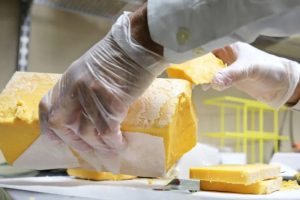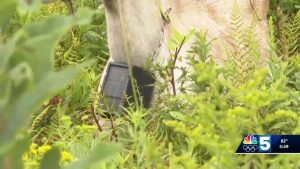
Compared to a year ago February milk production in the 5 leading dairy states was 4.3% higher in Texas, 0.7% higher in Wisconsin, unchanged in Idaho, 0.8% lower in New York and 0.2% lower in California. Milk production was lower by 13.1% in New Mexico, 4.4% in Florida, 4.0% in Arizona, 3.5% in Illinois, 3.4% in Ohio and Kansas, 3.2% in Minnesota, 2.9% in Michigan, 2.6% in Indiana and 0.9% in Pennsylvania.
Largest increases in February milk production were Georgia with an increase of 13.3% and South Dakota with 18.3%.
Cow numbers declining
Fewer milk cows and lower or no increase in milk per cow explain the decrease in total milk production. Milk cow numbers had been declining since peaking last May but reversed in February with an increase of 3,000. February cow numbers were 96,000 fewer than a year ago, a decline of 1.0%.
Sixteen of the 24 selected states had fewer cows than a year ago. Milk per cow was virtually unchanged with just a 0.1% increase. Ten of the 24 selected states had lower milk per cow than a year ago. High feed prices and some feed quality issues explain the poor milk per cow performance.
Feed, input cost impact
Dairy producers are facing much higher feed prices, higher labor costs and the cost of all other inputs. This is impacting producers’ decision to increase milk production by adding milk cows or to feed for higher production per cow.
USDA is forecasting a slight decline of 0.1% in 2022 milk production over 2021. The number of milk cows is expected to average 93,000 or 1.0% lower and milk per cow to increase just 0.9%. Milk production at this level is very bullish for milk prices.
Butter and cheese sales rise
While fluid (beverage) milk sales continue below year ago levels butter and cheese sales are higher. Sales above year ago levels are expected to continue. Restaurants are more back to normal, and in-person public events are returning.
However, higher gas prices, higher food prices and prices of most all consumer goods is cutting into consumer purchasing power. Consumers may reduce their frequency of eating in a restaurant as well as in store purchase of dairy products.
Record dairy exports
Milk prices were supported in 2021 by record dairy exports. The volume of dairy exports was 10% higher than the prior year and value was 18% higher. USDA is forecasting some decline in 2022 export volume from 2021.
The USDA is forecasting the 2022 volume of dairy exports on a milk fat basis to be down 6.9% from 2021 and on a skim milk basis to be down 2.5%. January 2022 exports on a volume basis was 3% lower than a year ago, but higher prices and increased cheese exports increased the export value by 16%.
January exports compared to a year ago were down 6% for nonfat dry milk/skim milk powder, down 16% for whey products but 17% and 63% higher respectively for cheese and butterfat. Despite some decline in export volume with no or slight increase in milk production exports will still be at level to support higher milk prices in 2022.
Prices strengthen
Class III was $20.38 in January and $23.09 in February. Both cheddar barrels and 40-pound cheddar blocks have strengthened in March being above $2.00 per pound most of the time. Dry whey was as high as $0.86 per pound in February but has stayed around $0.76 per pound in March.
But with higher cheese prices the March Class III will increase to around $22.40. Class IV was $23.09 in January and $24.00 in February. The price of butter has strengthened over February and the price of nonfat dry milk steady. The higher butter price will push the March Class IV price higher to around $24.80.
Prices to remain above year ago levels
With the forecast of no increase in milk production for 2022, modest increase in dairy product sales and the possibility of little lower exports milk prices for the reminder of 2022 will remain well above year ago levels. Dairy futures can quickly change but are now optimistic. Class III futures are $23 for April, $24 for May through September, $23 in October and November and $22 in December.
Class IV futures are $24 April through October and $23 November and December. USDA has increased its price forecast with Class III averaging $21.65 compared to $17.08 in 2021. Class IV is forecasted to average $23.70 compared to $16.09 in 2021.
Milk prices, at least this high, seems highly likely now. Higher feed prices will offset some of these higher milk prices. We know that things can change so dairy producers may want to consider using available dairy risk management tools and take advantage of existing higher dairy futures prices.
Cropp is Professor Emeritus at the University of Wisconsin Cooperative Extension, University of Wisconsin-Madison.
























